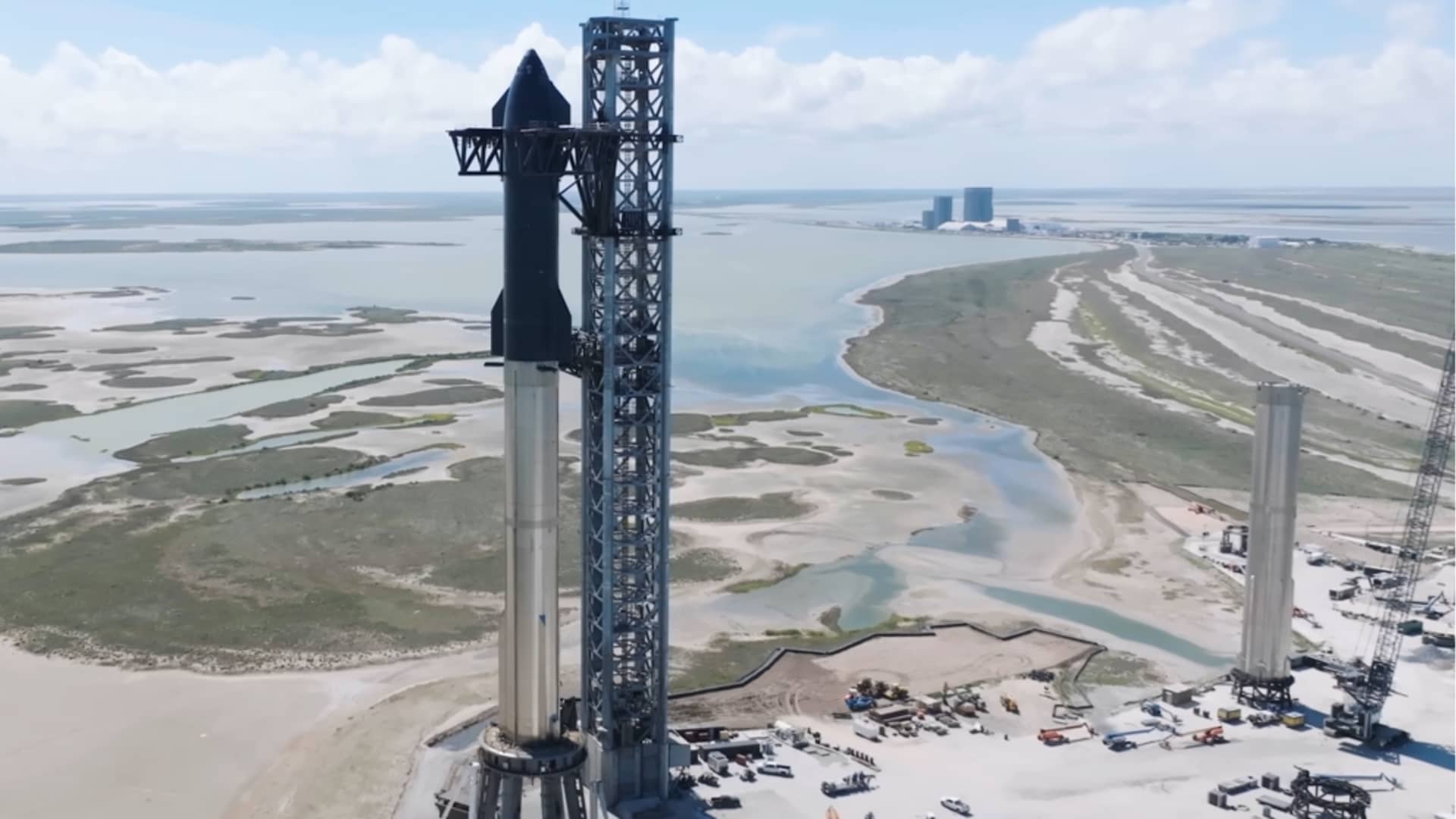While Elon Musk earns daily headlines over changes at Twitter, a significant reorganization is underway at his space company’s Texas launch facility.
SpaceX president and COO Gwynne Shotwell and vice president Mark Juncosa – two of the most influential executives at the company aside from Musk himself – are now overseeing the facility and operations of the company’s Starbase location, people familiar with the situation told CNBC.
Senior director of Starship operations Shyamal Patel is leaving the site to move to the company’s Cape Canaveral facilities, after spending more than two years working on the next-generation rocket in Texas, those people said. Patel was previously based at the Cape, before a promotion and move to Starbase.
The space venture also quietly brought on Omead Afshar, a Texas-based Tesla operations lead, as a vice president of Starship production.
The Information previously reported the new responsibilities for Shotwell and Juncosa, while Bloomberg first reported the addition of Afshar. SpaceX did not immediately respond to a CNBC request for comment on the reorganization.
SpaceX has steadily built up its facility known as Starbase, outside the city of Brownsville in Texas, which serves as the main hub for development, testing and launches of its nearly 400-foot-tall Starship rocket. The rocket is designed to carry cargo and people beyond Earth and is critical to NASA’s plan to return astronauts to the moon, with SpaceX having won a nearly $3 billion contract from the agency in 2021.
The appointments demonstrate the sense of urgency within the company to get Starship flying. Both Shotwell and Juncosa have been at SpaceX since its early days under Musk.
Juncosa visited Starbase over the summer for what was supposed to be a two-week stint, one of the people familiar told CNBC, to bring a new perspective and update Musk and Shotwell on the progress of development at the site.
That person called Juncosa’s findings alarming, with an orbital launch attempt further away than company leadership expected. SpaceX had hoped to conduct the first orbital Starship launch as early as summer 2021, but delays in progress and regulatory approval have pushed back that timeline.
NASA last month said SpaceX most recently told the agency that Starship’s first orbital launch could take place as soon as early December.
The Federal Aviation Administration completed a long-awaited environmental assessment of the Starbase facility in June, key to the company receiving a license from the federal regulator for Starship launches. But, as a result of that FAA decision, SpaceX was required to take more than 75 environmental mitigation steps – and it remains unknown if those actions are complete. The FAA did not respond to a CNBC request on Friday for an update on the process.
The Starship rocket and its Super Heavy booster are powered by SpaceX’s Raptor series of engines, and the whole system is designed to be reusable – unlike the partially reusable elements of the company’s Falcon series of rockets.
A year ago, Musk described a “crisis” with Raptor engine production, which caused the removal of a vice president from the program, who left the company. Since then, SpaceX has ramped Raptor production to a rate of seven engines per week – crucial, as each Super Heavy booster requires 33 engines, and each Starship rocket has six.
While Musk has long pushed for employees at its Hawthorne, California, headquarters to move to Starbase to help with the Starship effort, the company is further incentivizing relocation.
Last week, SpaceX rolled out an offer to salaried employees for pay bumps between 10% to 25% if they move to south Texas, people familiar with the situation told CNBC. The company also increased its hourly pay rates for non-salaried Starbase employees, CNBC learned, as well as added performance-based incentives for 2023.
Musk’s company is launching Falcon rockets to orbit at a blistering pace this year, as well as flying regular cargo and crew missions for NASA and others. But Starship is the lynchpin to further growth of the $127 billion company: SpaceX needs the rocket to effectively deploy the second-generation of its Starlink satellites, required to step beyond what Musk has described as the “financially weak” first generation.
SpaceX is building a backlog of private astronaut missions on the rocket.
The company last performed a Starship flight test in May 2021, with the SN15 prototype, but that was only to about 30,000 feet altitude – much less rigorous than an orbital launch will entail. In recent months, SpaceX has built momentum through successively more robust “static fire” engine tests of its Super Heavy booster prototype number seven and its Starship prototype SN24.
